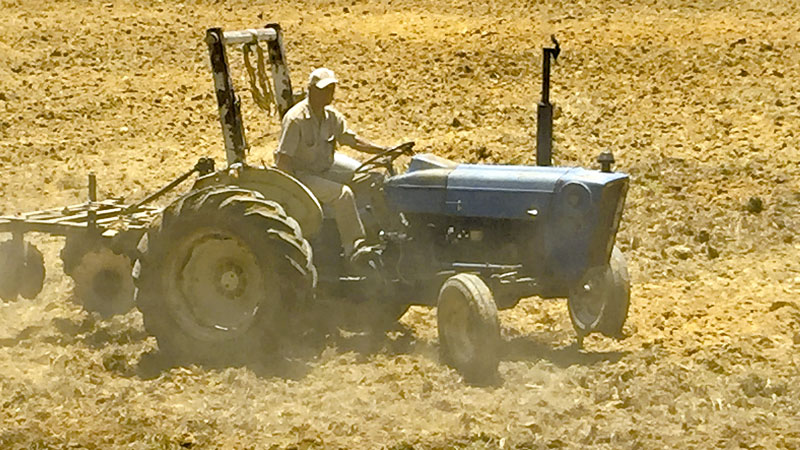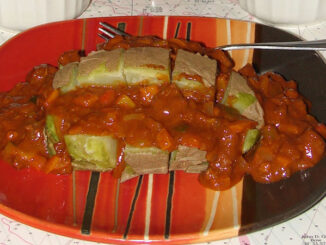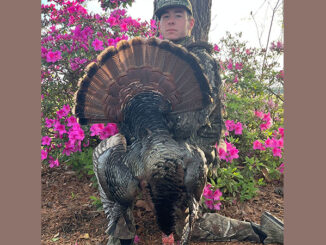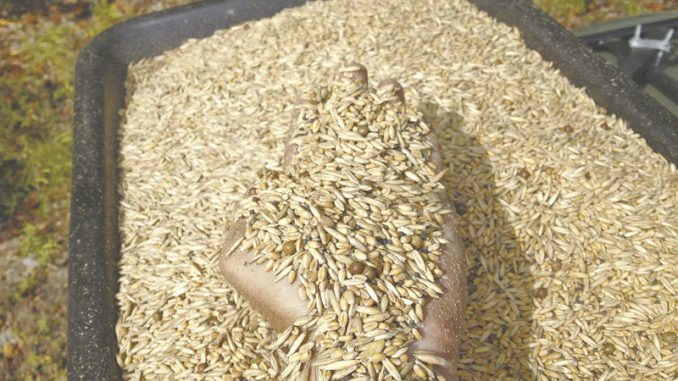
Both Food-Plot Strategies Have Their Advantages
Planting season has arrived, and for most land managers, a planting plan is already in the works. Most include clovers, oats, peas, chicory, brassicas or other cool-season selections.
But are pure stands or blends more acceptable? Both can produce good results. But blends can produce some challenges that need to be considered before co-mingling seeds in the hopper.
The intent of any food plot is to provide a highly sought-after food source to encourage wildlife from all directions to incorporate it into their daily routine. Landowners can achieve this objective with pure stands and seed mixes. And there isn’t one key to the decision. A pure stand can provide loads of food at the same time. A mix can provide a variety of foods at different times.
For instance, most brassica seed varieties offer a food source at the end of its maturation period. But oats, rye and other cereal grains will offer tender food availability immediately after sprouting from the soil’s surface. As these cereal grains mature, the stalks become less palatable and less attractive to wildlife. It just makes sense to plant these two seed varieties in a mix so that the food plot offers good nutrition from green-up of the grains all the way to the maturation period of the brassica variety. This mix can be beneficial for providing season-long food availability for any area in the country. However, specifics like plant spacing and herbicide use can cause issues when planting these two seeds as companions.
Different Schemes
To start of with, pure stands of any seed variety can be planted using the optimum method to produce the best results. Typically, blends incorporate a variety of seed types, seed sizes and growth characteristics that yield to a different grower’s scheme.
One of the most-common mixtures involves mixing cereal grains with larger, late-maturing brassica species. Taxonomically, oats are a grass, and brassicas are broadleaf plants. Mixing grasses and broadleafs eliminates the ability to use selective herbicides in these plots.
Most selective herbicides can be used to either target broadleaf weeds in grass plots or the opposite — target grass in broadleaf plots. Blends utilizing species represented in both plant families eliminate the ability to use pre-plant and post-plant herbicides. However, competition in cool-season plots is less of a problem than in warm-season plantings. Therefore, herbicides aren’t typically used in the fall plantings. So these herbicide incompatibilities are likely not relevant.
Size and Depth
The second important variable to consider when planting blends has to do with seed size and planting depth. Typically, cereal grains are very small seeds that require a very light covering of soil. When planted too deep, their success rate decreases dramatically. Additionally, they can be planted at a relatively high rate, as opposed to brassica and legume seeds that are usually much larger. Larger seeds need additional planting depth. And they generally produce larger plants that need more room to spread out.
As a result, planting these two seed sizes introduces a problem when machine planting. One alternative is to plant the larger seeds first at the proper depth and then top-broadcast the smaller cereal grains just before a big rain. The impact of the rainfall can cover the small seeds just enough to allow germination.
Seeding rates should be reduced for both species in the mixture. This allows enough area for each plant to grow sufficiently. Each companion plant requires adequate sunlight to facilitate energy synthesis. And they both need room to spread out.
Wildlife will benefit from the use of pure stands of one species versus a blend of species with staggered availability. And from a maintenance perspective, it’s better to use blends in the cool season as opposed to the warm season when weeds challenge any crop. When determining which planting regime to use, always consider the seed size and the expected coverage area of the plants when mature.
Time Tillage to Planting:
The aroma of fresh-turned soil and diesel fuel is the smell of fall for many food-plot gurus. It’s the beginning of the fall planting season. And hopefully, many deer will be coming here to play in the upcoming months. Many foot-plot growers plow their fields the day of actual planting. But they should really plow several weeks before actually embedding the seed in the soil’s surface.
All the soon-to-be-dead plants that get turned up from tilling contain usable nutrients that should be used again. Landowners should delay planting immediately after tilling. This allows the plants to die and for micro-organisms to regroup. This helps decompose the dead matter into usable nutrients for the new plantings.
Generally, two to three weeks is enough to wait after tilling for fall plantings.
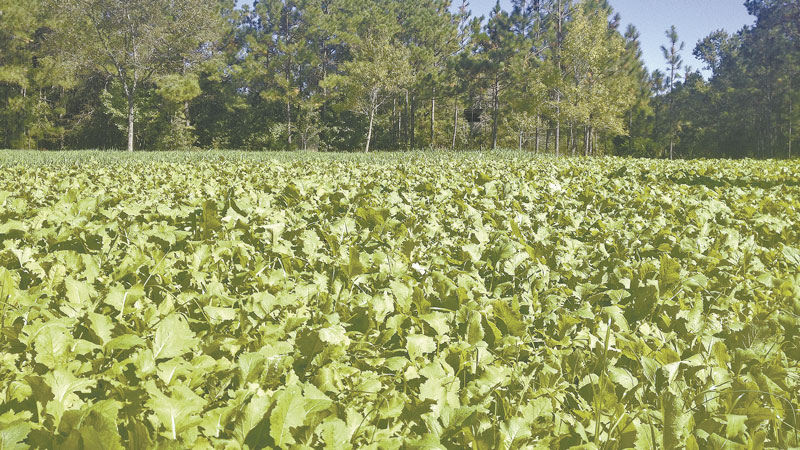
Learn from food plot successes and failures
Every planting season, property managers and hunters invest their blood, sweat and tears in a food-plot program. From new plots and new planting methodologies to new seed and fertilizer treatments, landowners are always trying to produce a bumper crop to feed their wildlife. When it works, repetition can be fruitful. But when it doesn’t, the plan needs an adjustment.
To a new grower, planting food plots may seem very elemental. They see the farmer down the road plow up some fields, spread some fertilizer and plant some seeds. Seems easy, right? Sure, planting food plots can be an easy task. But a long list of variables can quickly cripple a well thought-out plan.
The one thing the onlooker didn’t see was the farmer’s careful planning. Most large-scale, commercial farmers have an agriculture services company calculating exact application contents and rates that are crop- and location-specific. Planning and careful control of as many variables as possible is the key to success for growing any types of crops.
Even when income is not at stake, the best planning nets the best results
Of course, food-plot growers are not trying to earn next year’s income with their 1 ½-acre Durana clover plot. But careful consideration of as many variables as possible is necessary to make the best shot at obtaining the desired results.
Analyzing prior history is an excellent way to improve results. Certainly, when a plan comes together, repeating the same regiment in the next planting session makes sense. But this isn’t usually the case for most amateur growers. The actual results from a previous season rarely parallel the desired results, especially for the first timers. If landowners want a better outcome, they should modify their methods to improve their results.
Albert Einstein once said, “The definition of insanity is doing the same thing over and over again but expecting different results.”
Develop a solid plan, experiment with different treatments, and record everything. After a few years of experimentation and in-the-woods experience, landowners will learn what works well on their properties and what doesn’t. Let history dictate your future.
Click here to read about food plots for acidic soils.

